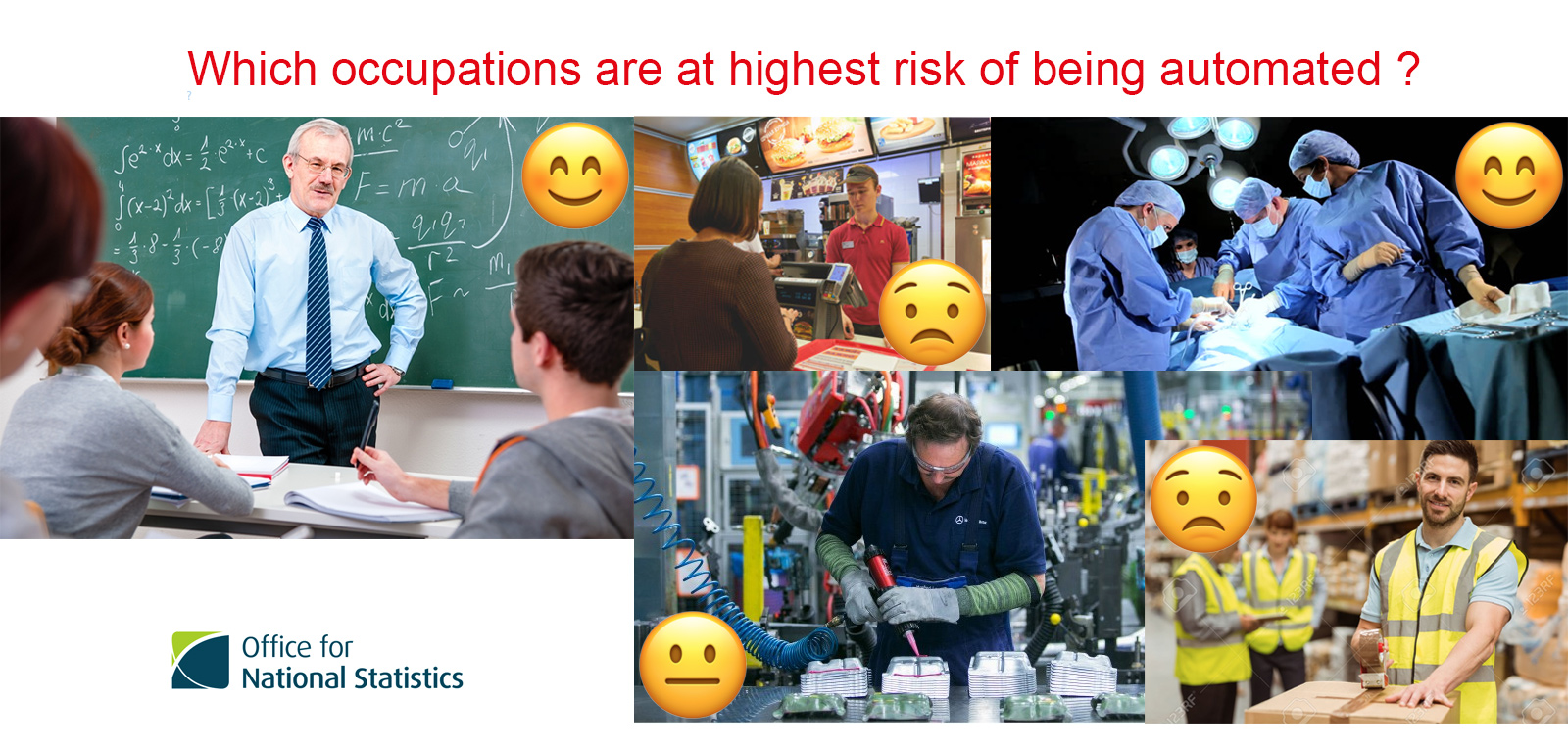Which occupations are at highest risk of being automated?
Potential automation of occupations may have an impact on the labour market in future. Which jobs are most at risk, and what do we know about the people who do these jobs?

Around 1.5 million jobs in England are at high risk of some of their duties and tasks being automated in the future, Office for National Statistics (ONS) analysis shows.
The ONS has analysed the jobs of 20 million people1 in England in 2017, and has found that 7.4% are at high risk of automation.
Automation involves replacing tasks currently done by workers with technology, which could include computer programs, algorithms, or even robots.
Women, young people, and those who work part-time are most likely to work in roles that are at high risk of automation. Self-checkouts at supermarkets are now a common sight, reducing the need to have as many employees working at checkouts. Additionally, while the overall number of jobs has increased, the majority of these are in occupations that are at low or medium risk, suggesting that the labour market may be changing to jobs that require more complex and less routine skills.
The analysis looked at the tasks performed by people in jobs across the whole labour market, to assess the probability that some of these tasks could be replaced through automation.
It is not so much that robots are taking over, but that routine and repetitive tasks can be carried out more quickly and efficiently by an algorithm written by a human, or a machine designed for one specific function. The risk of automation tends to be higher for lower-skilled roles for this reason.When considering the overall risk of automation, the three occupations with the highest probability of automation are waiters and waitresses, shelf fillers and elementary sales occupations, all of which are low skilled or routine.
The three occupations at the lowest risk of automation are medical practitioners, higher education teaching professionals, and senior professionals of educational establishments. These occupations are all considered high skilled.
Extract from Office for National Statistics (ONS). 25 March 2019. "Which occupations are at highest risk of being automated?". [report]. Available at <https://www.ons.gov.uk/employmentandlabourmarket/peopleinwork/employmentandemployeetypes/articles/whichoccupationsareathighestriskofbeingautomated/2019-03-25>